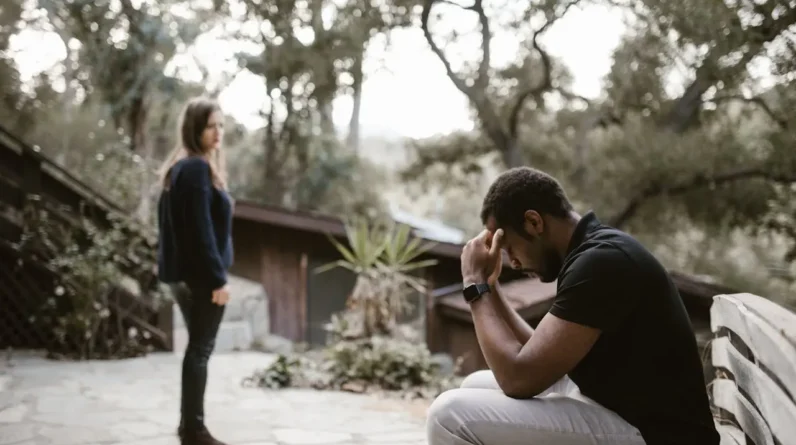
We’ve all been there—stuck in a loop of emotions we can’t seem to shake.
Whether it’s guilt, anger, shame, or hurt, these feelings can weigh us down, holding us back from living our best, most authentic lives.
It’s frustrating, isn’t it? You want to move forward, but something inside won’t let go.
One of the best ways I’ve found to get to the root of these emotions is journaling.
There’s something about putting pen to paper that allows your thoughts to flow freely. You don’t need to filter, censor, or explain yourself. You just let it all out. It’s like giving your heart a voice.
But where do you start?
Sometimes the hardest part of working through difficult emotions is figuring out what questions to ask yourself. That’s why I’ve created 40 journal prompts to:
- help you dive deep
- uncover what’s really going on inside
- begin to release the emotions that are holding you back
40 Emotional Release Journal Prompts to Help You Move On
Understanding and Naming the Emotions.
Before you can let go of emotions, you need to name them.
It sounds simple, but honestly, most of us don’t take the time to sit with our feelings long enough to understand them.
We’re too busy, distracted, or just plain scared to face what’s there. But without identifying the emotion, it’s almost impossible to release it.
- What emotion have you been holding onto the longest? How does it show up in your life?
- When do you first remember feeling this emotion? Describe the situation and your reaction.
- How does this emotion serve you? Does it protect you in some way?
- What are the physical sensations or bodily reactions you experience when this emotion surfaces?
- If this emotion could speak, what would it say to you?
Take a deep breath and reflect on these. Sometimes just naming the emotion and tracing its origins can already create some release.
Exploring the Source of the Emotions.
Where do these emotions come from?
Often, the feelings that control us today are rooted in past experiences—ones we haven’t fully processed. By exploring the source, we begin to untangle the knots.
- What past event or relationship is most tied to the emotion you’re holding onto?
- Are there patterns in your life where this emotion frequently appears? What triggers it?
- How did your family or environment handle this emotion when you were growing up?
- Is there an unresolved memory or wound connected to this feeling? How does it still affect you today?
- Have you been avoiding this emotion? If so, why do you think that is?
This can get intense, but it’s so worth it.
When you start to connect the dots, you’ll realize that some of the emotions you carry aren’t even yours to begin with. They were handed to you by past experiences or other people.
Acknowledging and Accepting Your Emotions.
Once you’ve identified the emotion and its source, it’s time to sit with it.
Often, we try to push feelings away because we judge them. We think, “I shouldn’t be feeling this way,” or, “I should be over this by now.” But acceptance is key to healing.
- How do you feel about experiencing this emotion? What judgments do you place on yourself because of it?
- What would happen if you allowed yourself to fully experience this emotion without resisting it?
- What fears arise when you think about confronting this emotion head-on?
- How do you show compassion toward yourself when you’re feeling this emotion?
- What does this emotion need from you right now—love, attention, patience?
Imagine sitting with the emotion like it’s an old friend. You don’t have to love it, but you can accept that it’s part of your story.
The Impact of the Emotion on Your Life.
We often underestimate how much our emotions shape our lives.
They influence our choices, our relationships, and even how we see ourselves. This is why it’s so important to understand the impact of what you’re holding onto.
- How does this emotion influence your daily decisions or behaviors?
- How has it affected your relationships with others? Has it caused disconnection or conflict?
- In what ways has holding onto this emotion shaped your identity or sense of self?
- How would your life look or feel different if this emotion no longer had power over you?
- What is this emotion preventing you from achieving or becoming?
Ask yourself these questions with curiosity, not judgment. The goal isn’t to beat yourself up over the past, but to understand where you’ve been so you can move forward.
Releasing and Healing.
Letting go isn’t easy. I mean, if it were, we’d all be doing it, right?
But when you start releasing these emotions, you make space for new feelings—feelings like peace, joy, and freedom.
- What do you need to let go of in order to release this emotion?
- What are the first steps you can take toward forgiving yourself or others involved?
- How would it feel to release this emotion completely? Visualize your life without it.
- Who or what do you need to forgive in relation to this emotion?
- What positive experiences, strengths, or lessons have come from this emotion?
Think of releasing emotions like unclenching a fist you’ve held closed for too long. It may feel stiff at first, but soon, the tension will fade.
Embracing Vulnerability.
Being vulnerable is scary, but it’s also necessary for healing.
You can’t release emotions while keeping your guard up. Vulnerability isn’t weakness—it’s courage. It’s stepping into your truth, even when it’s uncomfortable.
- What would it mean to be vulnerable with this emotion? Can you share it with a trusted person?
- How does fear of judgment or rejection play into your reluctance to release this emotion?
- What are you afraid will happen if you allow yourself to be vulnerable and release control over this emotion?
- What positive outcomes could come from opening up about this emotion?
- Can you think of a time you’ve seen vulnerability lead to healing? How did that impact you?
This is the hard part. But trust me, when you allow yourself to be seen—even with your messy, uncomfortable emotions—healing speeds up.
5 Thoughtful Journal Prompts to Help You Discover Who You Are
Building New Emotional Patterns.
Once you’ve released the old, it’s time to build something new.
Emotional habits are just that—habits. And like any habit, they can be changed with time and intention.
- What healthier emotional habits or responses would you like to cultivate in place of the emotion you’re releasing?
- How can you bring more joy, peace, or love into your emotional experiences moving forward?
- What daily practices (e.g., meditation, affirmations) can help you maintain emotional balance?
- Who or what will support you in releasing and transforming this emotion?
- How will you remind yourself to be patient with this process of change and healing?
This is about creating a new normal for yourself—a life where your emotions don’t control you, but guide you.
Moving Forward with Self-Love and Compassion.
Releasing emotions is an ongoing process.
Some days it’ll feel like you’re making huge strides, and others you might feel stuck. That’s okay. The key is to be kind to yourself as you continue on this journey.
- What does self-love look like for you in the context of releasing this emotion?
- How will you nurture and care for yourself as you continue to let go?
- How can you celebrate the progress you’ve made in healing from this emotion?
- What words of affirmation can you offer yourself in moments when this emotion tries to resurface?
- What do you want to say to your past self who first experienced this emotion?
It’s easy to be hard on yourself, but self-love is about treating yourself with the same compassion you’d show a friend. You’re doing the work, and that’s worth celebrating!
Emotional Release Journal Prompts: They Can Help!
Emotional release isn’t a one-time thing.
It’s a practice—a journey of continually peeling back the layers, understanding yourself, and letting go. The prompts in this article are just a starting point.
Use them when you feel stuck, overwhelmed, or unsure of how to move forward. Remember, you’re not alone in this process. It’s okay to take your time, and it’s okay to revisit these prompts as many times as you need.
Healing isn’t linear, but every step forward counts. Keep going—you’ve got this.
Photo by cottonbro studio







